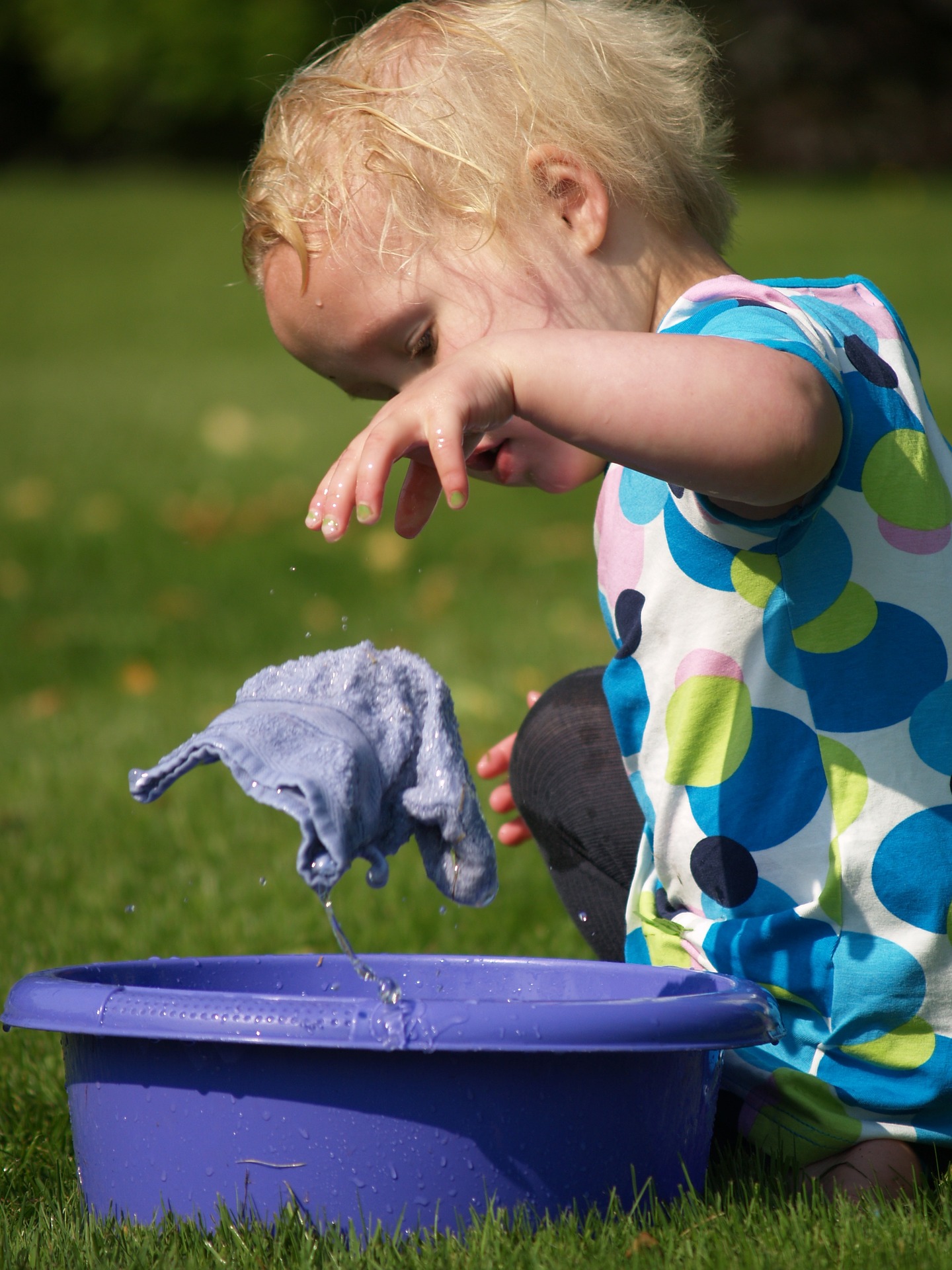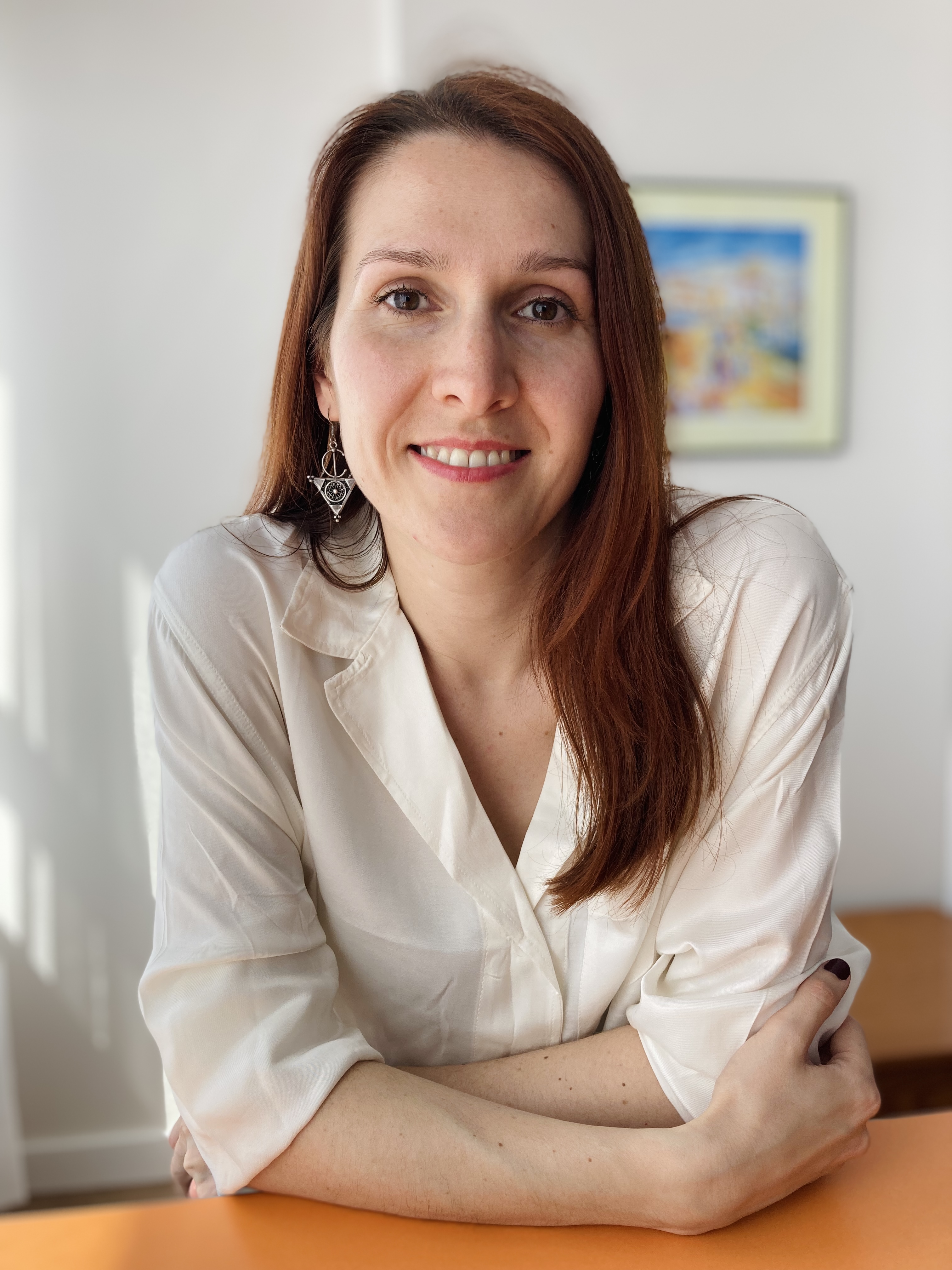One of the Montessori corner stones is the Practical Life area. If you’ve never set foot in a Montessori classroom, this name might not say much and it might be difficult to associate it to something concrete. For who hasn’t gotten to see a Montessori classroom, I’ll try to shed some light on this area.
The Practical Life area is named this way, because the activities the child does with materials from this area are day-to-day activities, practical, real, so that their result is visible to the child.
For instance, what we perceive as a chore or has gotten to be an automatism - dusting, cutting a fruit, cleaning a window, tying some shoe laces - becomes an activity per se for the child in the Montessori environment. These are activities that have a beginning and and an end, logical steps, that allow the child to master a certain movement or a specific action.
Children love feeling useful and especially love witnessing the concrete, palpable result of their work. It helps them become aware of their value, of what they can and can’t do, of what they still need to work on. And they love it! I’ve already mentioned that, right? But they truly enjoy doing this, as if they’re preparing for life. But that is precisely what they’re doing, they build themselves, in order to be prepared for life.
Among the Practical Life materials is the activity of washing a table.
Yes, it is exactly what its name says, the child learns to wash a table. The material is made up of a child-sized tray, with the size-appropriate tools he needs to wash a table: 3 small bowls for a small soap, a brush and a sponge, a jug and a bowl for water, a towel and a water resistant mat to set out all the objects. The child puts on an apron, chooses a dirty table and washes it. So far, everything is precisely what one can see when watching him: a child is washing a table.
What happens inside the child when he is doing this activity, one that at the surface seems meaningless or as some adults see it, no big deal.
This is what I will explain further. I will start with what happens before the actual work of the child.
The teacher presents the material.
When a teacher observes a child and sees that they are interested in activities that require washing, water, but also observe that he is physically prepared to do these type of activities (concentration, motor coordination), he presents the table washing activity. The presentation is organized in clear steps and stages, always the same ones, that the teacher presents slowly, he himself washing a table so that the child can observe the process.
In that moment, the inner work of the child is observation and it is colossal.
Do you know how hard it is to observe without interfering, only focusing at the task at hand? Very hard! That is when the child channels all his energy to this single purpose, of observing the exact steps, that he will be doing himself afterwards, in order to be successful at washing a table. His brain will focus at observing the movements the teacher makes, he’ll store them and use them when working. That is why the teacher doesn’t talk when demonstrating a step, he only talks between steps, to allow the child to absorb what he sees, without being distracted by words.
The child’s work.
It begins after the teacher steps back and allows him to practice as much as he needs.
Now, the child has the chance to put the information he gathered to practice, to let his memory speak and to put it into a concrete activity, done with his hands.
I think you know that seeing someone ride a bike is one thing but actually riding it is a totally different one. You’ll say the two examples aren’t comparable, but they are. For a child, learning something new for the first time is a new cognitive process, just as it is for you when you learn something new.
The moment the child starts doing the steps he observed, he experiments, he puts together his physical energy and his mental one, in order to be able to coordinate his movements. That is when he focuses, when the two energies work simultaneously to serve the same purpose.
What happens when a child focuses? Fireworks, the Big-Bang, wonders, the development of his intelligence and self-development, that only happen through work, by uniting the hand and the brain.
He won’t remember all the steps from the first try, he won’t finalize the activity from the first try. He will forget to wet the table with the sponge, before using the soap and brush. But this is precisely what will be useful to him. He will discover that without water, you don’t get the foam and bubbles that help clean the table and help you have smooth movements. And what do you know? He will find the solution on his own.
Finding solutions is a sign of intelligence. He will return, analyze what he did and try it differently, he will find many ways in which he doesn’t get the wanted result, until he’ll actually find the right way to do it. But when he does find it, wow, what a satisfaction! He managed to do something on his own, self-assessing his work, trying out various alternatives.
When you get the opportunity to practice, to test options that lead you to succeed, you develop patience and perseverance. You develop the ability to observe and analyze. You create new neural connections, that you’ll always be using in situations that require finding solutions.
I mentioned that developing intelligence and self-development are done through work, through the use of hands.
When you squeeze the sponge to rinse it and to wet the table, you use the muscles of your hand, you strenghten them, you accustom them to the intensity required to be able to squeeze, therefore you tune your movements and realize that when you hold a flower you don’t apply the same pressure, because you brake it.
When you carry the tray with all the objects on it, you tune your body to be able to carry something heavy, differently from when you do when you hold a pencil. Your arm muscles are working hard.
When you hold the brush to clean the table, you realise through trial and error, that you must press hard in order to clean away the dirt and to get the foam needed. You squeeze hard using all the fingers from your dominant hand. In order to clean all the table, you stretch your arms, you move them from left to right, up and down, which is intense work for the arm muscles and the legs', because you must stand to clean the table and bend to pick up what you need from the tray that is sitting on the floor, next to the table.
The movements shown by the teacher when presenting are not accidental.
The child can see that you wet the table from left to right, that you scrub the table using circular movements, that get lighter towards the table’s edges. All these movements indirectly prepare the child for writing, because we right from left to right, from top to bottom. The muscle memory develops, the pattern absorbs subconsciously, which makes the transition to writing easier.
By working with Practical Life materials the child integrates the pattern of a finalized action.
Doing an activity from beginning to end means knowing that you want to work with the table washing material, picking it up from the shelf, preparing it, working with it following all the steps, replacing the used cloths and putting the material back. A lot of work, right? A lot of work that is performed physically, cognitively and spiritually simultaneously.
You choose to work with something, so you are in agreement with want you want, what you feel, you manage to identify what you wish. You start working, knowing what comes next. The young children (up to 3 yo), don’t necessarily finalize the whole process. But the more they practice, the more they become aware of what table washing means and think ahead, meaning that they know they’re about to begin an activity that takes a while, with a lot of steps. I had children in my classroom who organized their schedule and planned their activities, because they knew for instance that washing a table takes quite some time, so does working with the movable alphabet, so they chose one or the other, since they didn’t have time to finish both.
Step by step, you develop this awareness of what it means to finalize an activity that has visible results. And the result is your work’s result: the clean water you had in the beginning is now dirty, the dirty table is now clean and you can use it to work with another material on it.
You gain self trust, because you can see that you are capable of doing things on your own, you see you get results and you see that you are successful in what you embark on. This motivates you to keep trying, because you know you can do it. You start developing courage and initiative. You see yourself as capable of success! And all these abilities don’t stay in the classroom when you go home. You take them with you, you keep them with you always.
Everything the child develops through working with the table washing material, he will use gradually in working with other materials that require a lot of cognitive energy. He will learn numbers and letters, he’ll add, he’ll learn where Africa is and what the parts of a frog are. But in order to be able to get all this information, he needs to be able to focus, he needs to assimilate the pattern of a finalized activity, to experiment success and to know that your hands and body can do amazing things and can help you serve a purpose you set your mind to.
Washing a table is just one of the materials that await the child in the Practical Life area and that help him build himself and develop his intelligence. There are many others that answer the child’s need to feel useful, to discover what they can do, to develop their muscles and their intelligence, to learn to do things that bring satisfaction, to bring a contribution to the world they live in.
Practical Life is a corner stone to the Montessori method, because beyond the activities it offers, it also gives the child contexts to build himself physically, emotionally and mentally.

